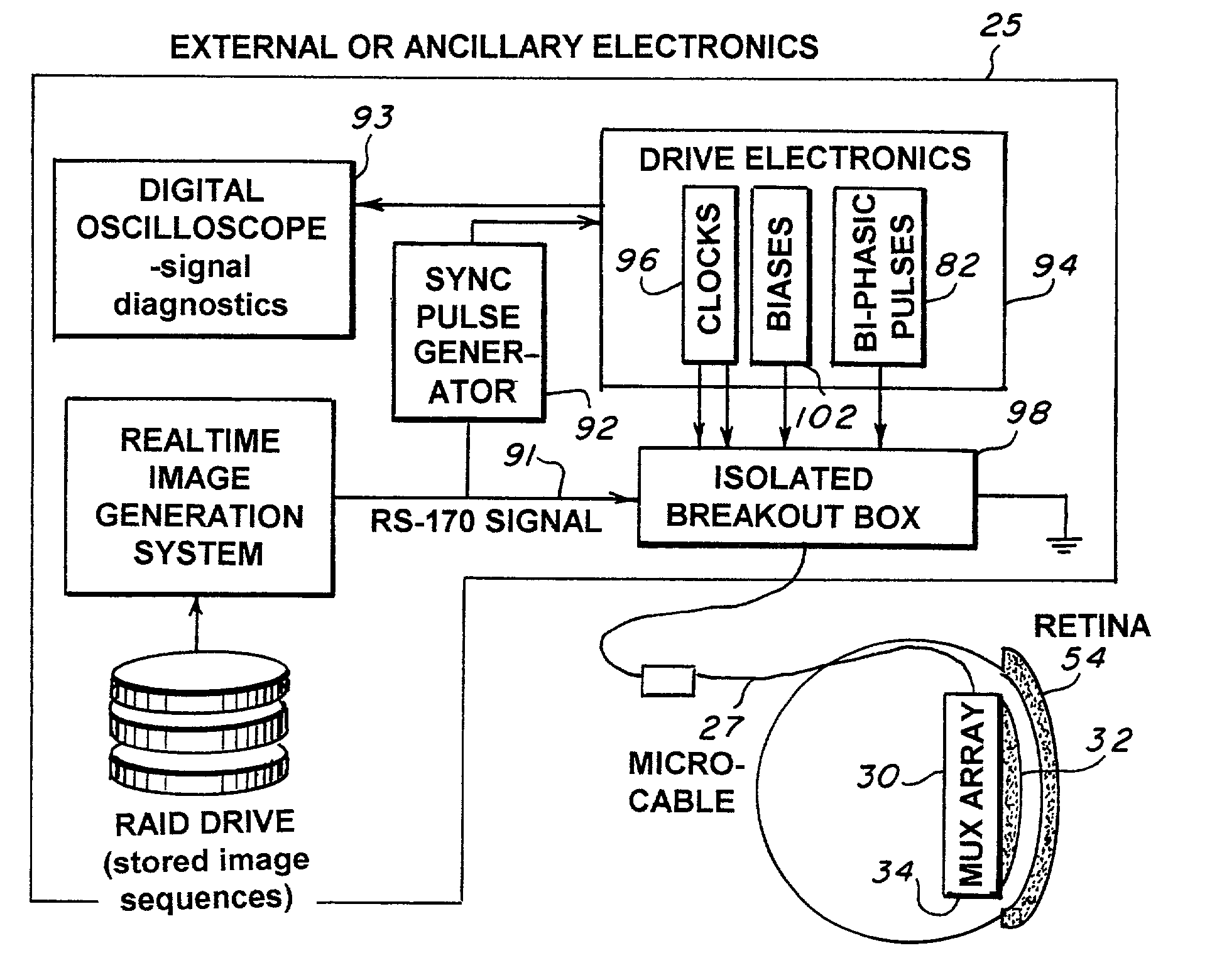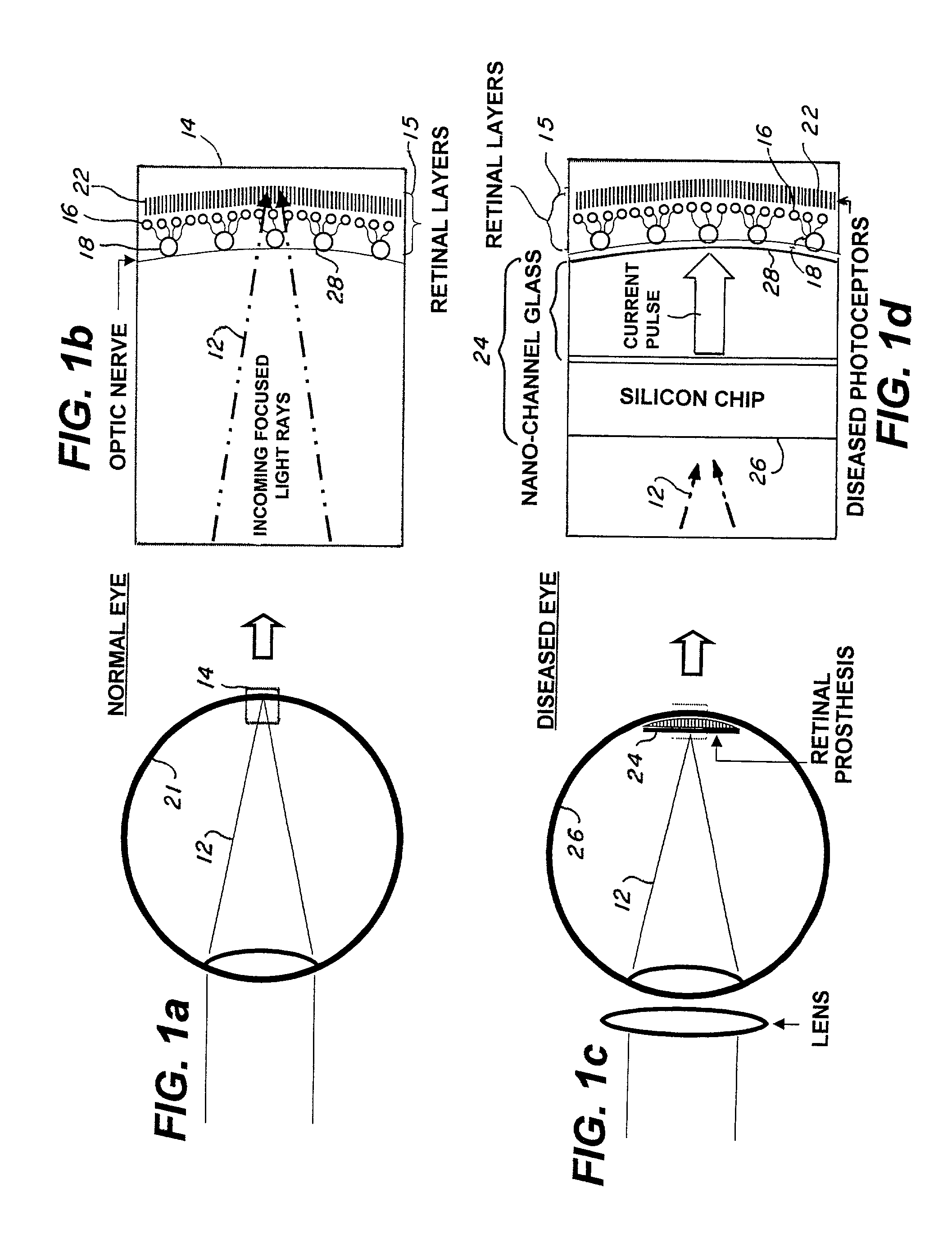Microelectronic stimulator array for stimulating nerve tissue
a micro-electronic stimulator and nerve tissue technology, applied in the field of neurosurgical prosthesis, can solve the problems of preventing certain image processing functions, creating an electrical interface between the high-density electrode array and the curved surface of the retina, and direct electrical stimulation of the ganglion cells
- Summary
- Abstract
- Description
- Claims
- Application Information
AI Technical Summary
Benefits of technology
Problems solved by technology
Method used
Image
Examples
Embodiment Construction
[0029]In the preferred embodiment of a retinal prosthesis test device utilizing a microelectronic stimulator array 30, as shown in FIG. 3a, the nanochannel glass (NGC) electrode arrays 32 is hybridized to silicon multiplexer 34 using indium bump bonds, a technique from infrared (IR) focal plane array (IRFPA) multiplexers. An image is serially input onto the multiplexer 34 via a very narrow, flexible micro-cable 36. The micro-cable 36 is approximately six inches in length and is custom made using gold leads patterned on polyimide strips. A ceramic carrier 38 with gold-filled via holes 42 provides a mechanically convenient means of routing interconnects from the top-side 44 of the ceramic carrier to the back-side 46. By designing the ceramic carrier such that the top-side contacts to the via-holes 44 are in close proximity to bond pads 48 on the silicon multiplexer 34, the interconnection may be made with conventional tab-bonds 52 (thin gold ribbons fused to interconnects with mechani...
PUM
 Login to View More
Login to View More Abstract
Description
Claims
Application Information
 Login to View More
Login to View More - R&D
- Intellectual Property
- Life Sciences
- Materials
- Tech Scout
- Unparalleled Data Quality
- Higher Quality Content
- 60% Fewer Hallucinations
Browse by: Latest US Patents, China's latest patents, Technical Efficacy Thesaurus, Application Domain, Technology Topic, Popular Technical Reports.
© 2025 PatSnap. All rights reserved.Legal|Privacy policy|Modern Slavery Act Transparency Statement|Sitemap|About US| Contact US: help@patsnap.com



